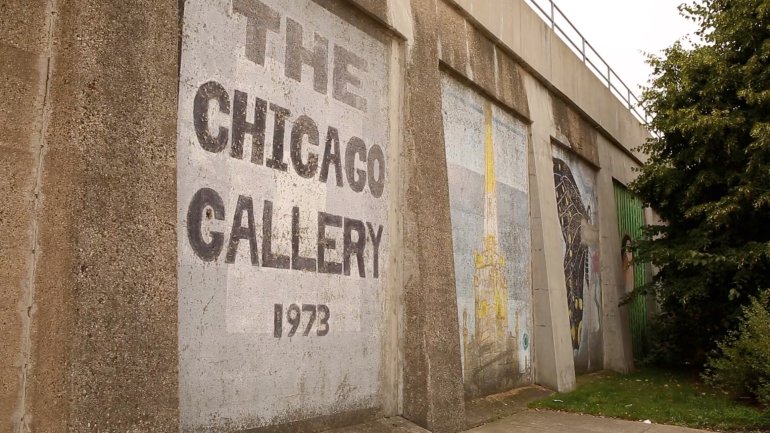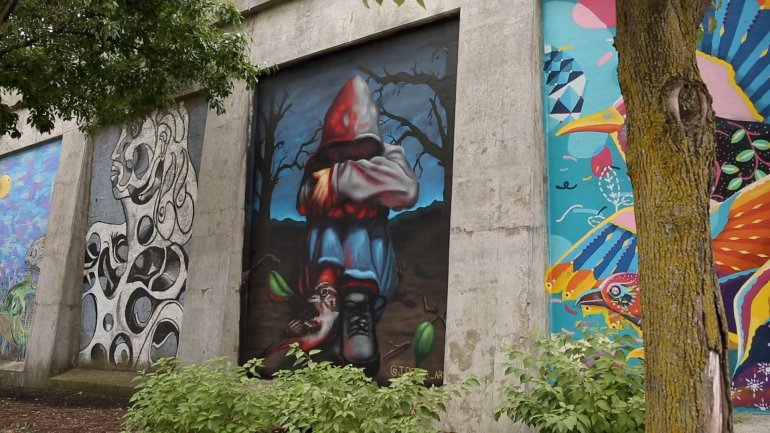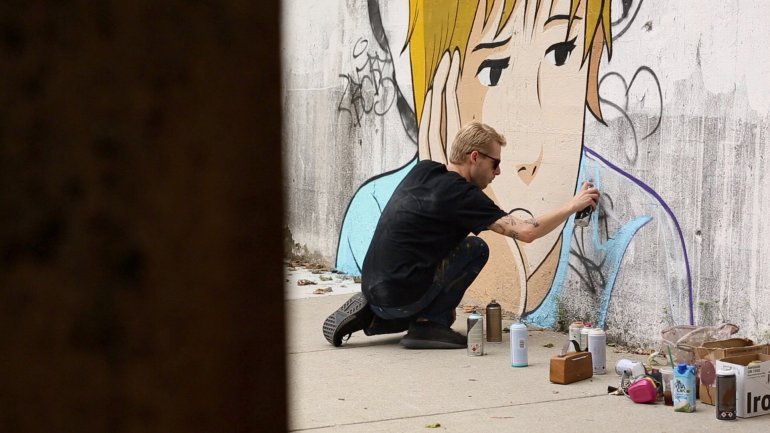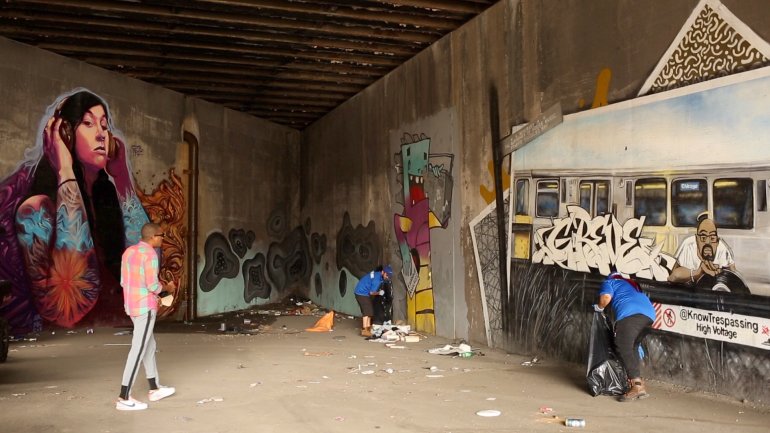A decades-old street art gallery in Chicago was beginning to fade, but now a new generation is transforming it into a world-class art district. Here’s their story — in their own words.
Lavar Hoard, Founder, The B_Line
The B Line is a gallery much like the Art Institute. In all, there’s about 250 murals under one central curation.
I lived in Fulton Market District for 11, 12 years now, and I would always walk by with a sort of curiosity about what these faded and cracked murals were. My curiosity grew to the point where I called up the train company Union Pacific I asked them what’s the deal with that project?

So in 1971, Ricardo Alonzo with walk from West Town to SAIC where he was going to school, where he would see these walls like I did. He was inspired to want to paint those because they presented themselves like a gallery.
It was really a community-focused project. There was a lot of racial tension in the city, but you had black artist painting next to latino artists and white artists.
After two years, we’re probably only 20 percent into this revival effort as I call it. Our goal is to do justice to the first street art district in this country, and to show a lot of different forms of art and to show how far street art has come in 50 years.

Jake Mertens, Artist
I’m from Lincoln Park. As a kid in Chicago, I don’t really remember seeing a lot of like public art other than you know, some of the like 1970s stuff on Hubbard on the B Line.
When I was getting into street art, before I started painting, a part of the thrill was hunting it down, like going to see the new stuff popping up in the city. And the B Line has been great about booking more and more artists from around the world, who are coming here to install.
As a local like me, as I’m sure it is to a lot of other people, it really really means a lot because you get to have a little more pride in your city, you know, and it’s a way to bring people together.

Lavar Hoard, Founder, The B_Line
Really, when you look at these walls, it presents itself just like gallery with each one of these buttresses dividing the walls. You’re gonna get like some high concept Mexican Street art, mixed with a something you might expect to see at the Art Institute, colorful abstract murals.. and you’re gonna get people of color.
We have to transform this grimy, shady looking, you know railroad tunnel and underpass into a thing of beauty and it’s a it’s a huge process. Today, we are cleaning up one of the many tunnels on the B Line. It’s been a hotbed for fly dumping furniture, dumping trash. We call the city, but they’re not – shall we say – quick, or don’t respond. We pick up the slack.
I walk these tunnels and these alleys and these streets every day. So do my artists and some of the people that help out in the community. So there’s always eyeballs in these forgotten spaces. That’s just one of the powers of street art that I found, is that the art itself can bring people together.
There’s a power to what we’re doing and if I don’t do it, who will?











